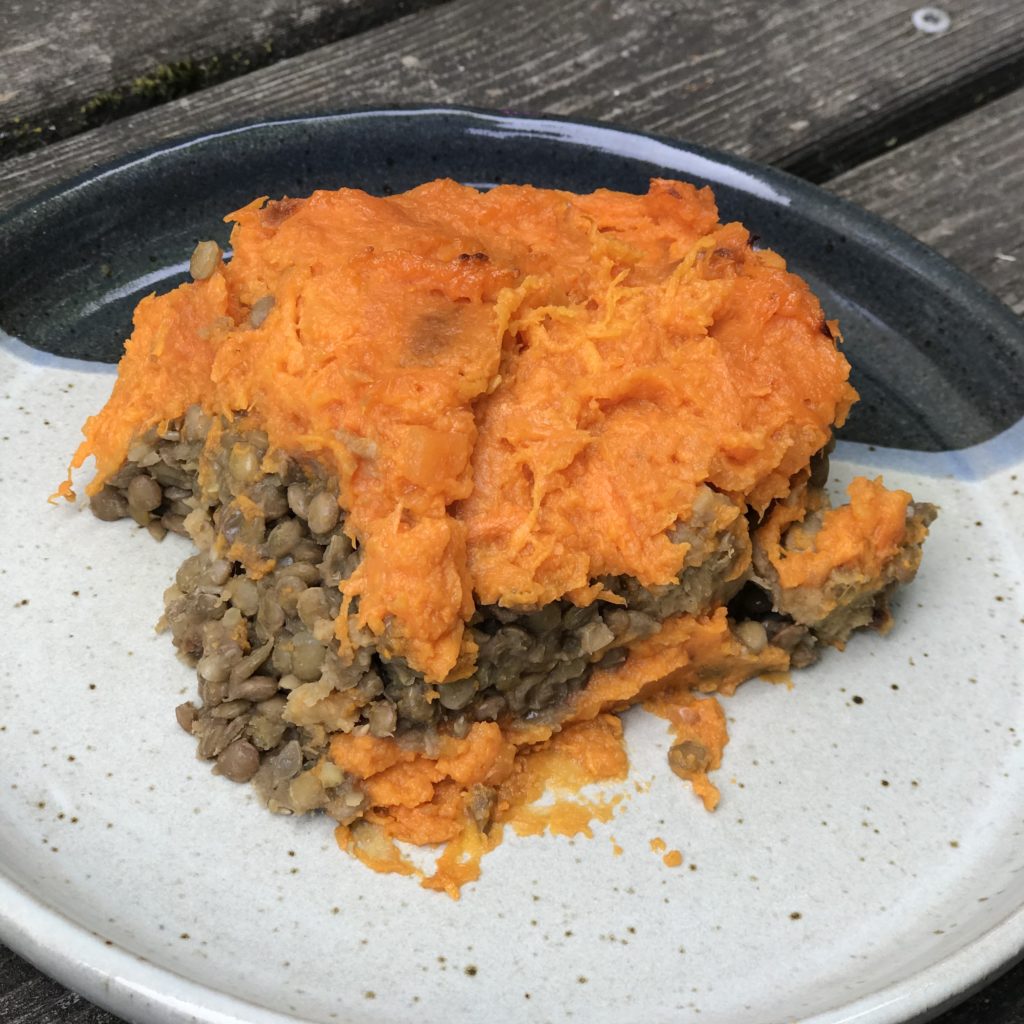Lentil, Seitan, Sweet Potato Shepherd’s Pie

If you sift through the Vegan Health & Fitness category on this blog, you’ll find quite a few recipes that use sweet potatoes. I was going through the list the other day, and was thinking how it seems like that’s all I eat. It is a good vegetable, after all; one that is packed with tons of beta-carotene and fiber. It’s also versatile—anything that can be prepared in a number of ways has value, in my opinion.
Now that marathon training is at its peak, it’s so important to replace the calories that have been lost, in order to seal in the endurance you’re building. The last recipe was a curry dish. An excellent blend of sweet and savory flavors, this Shepherd’s Pie here is another twist if you have extra lentils and sweet potatoes lying around. This dish is typically considered a heavy “winter food,” but in this case, the extra nutrients are welcome.
And you’re looking for some extra protein to rebuild those tired muscles after running 20 miles in one go, the seitan packs a punch. Seitan is a meat substitute that is made from vital wheat gluten, so it’s not gluten-free. If you want a gluten-free recipe, try using tempeh (fermented soybean cakes) instead.
You will need:
Seitan or tempeh
- 1 lb. of seitan, cut into 1-inch chunks. I used this recipe, but you can use store-bought seitan. For a gluten-free option, use tempeh.
Lentils
- 2 cups of lentils
- 4 cups of vegetable broth
- 1 onion
Mashed sweet potato
- 5 medium sweet potatoes
- 4 Tbsp. of Earth Balance (vegan margarine)
- Salt and pepper to taste
Optional
- Steamed kale
How to cook:

If you’re going to make the seitan rather than using the store-bought variety, then make the dough first. Set it aside.
Preheat oven to 425˚ F. Poke the sweet potatoes all over with a fork, wrap them in aluminum foil, and bake for 1 hour.
Meanwhile, dice the onion into quarter-inch pieces. Heat the broth to a boil, and put the lentils and onion in. Reduce to a simmer. Cook for 45 minutes, until the lentils have absorbed all of the broth.

If you’re making the seitan as well, cook that at the same time you’re cooking the lentils. Cut them into 1-inch chunks and cook them according to these recipe instructions.
Stir together the cooked lentils and seitan together into a 2-quart baking dish. It’s okay if there’s some left over (the extra can be saved for something else), but remember to leave some room at the top for the mashed sweet potatoes.

When the sweet potatoes are done, take them out of the oven and let them cool for 15 minutes. They will still be warm, so very carefully peel them into a large bowl; the skin should come right off. Add the Earth Balance, salt, and pepper, and mash them all together into a paste. Spread the mashed sweet potato on top of the lentil and seitan mixture inside the baking dish.

With the oven still heated at 425˚F, put the dish in and bake for 15 minutes. When that’s done, broil for 5 minutes to get a slightly crispy top. After taking it out, cool for an additional 15 minutes.
Bon appetit!



It’s a good meal to prep on a Sunday afternoon to have throughout the week. It pairs well with steamed kale or other veggies. Let me know what you think. Bon appetit!




